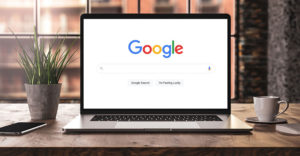
Apple held most of the music industry virtually at knifepoint for years, and that wasn’t necessarily a bad thing, especially if you were a consumer who wanted a legal way to get popular music at a fairly reasonable price: a buck a song, 10 an album, no exceptions. It was only about a year ago that iTunes let go of its dollar-store policy and allowed for a little leeway in its pricing. True, that leeway amounted to only a few cents per song, but the point is, for a very long time, it was the distribution channel dictating prices, not the publisher.
Amazon’s recent actions were in the same spirit, but the results were very different. The etailer had a brief spat with Macmillan, one of the largest book publishers providing titles to the Kindle e-book reader. Amazon wanted to keep the price of e-books below 10 bucks, but Macmillan thought some of its stuff was worth more like US$13 to $15. So Amazon pulled all Macmillan books, which put a noticeable dent in its available selection.
It was pretty clear from the get-go that this was only going to be a temporary move — Amazon even acknowledged in a note to users that it would have to eventually capitulate, and at that point, it would be readers who’d get to decide whether the price was right. The freeze-out lasted a whole day.
So how come a book publisher got its way so quickly, when the Big Four music labels had to fight tooth and nail for years just to charge 30 cents more for a song? Well, experience counts for something. Producers of every sort of medium that can be digitized — books, movies, TV — they all look at the music industry as an early example of what not to do.
Also, Amazon can’t pound book publishers into submission with the threat of piracy. Back in the day, iTunes could basically tell record labels: “Look, anyone with a CD drive on their computer can rip and share your stuff, so come with me if you want to live.”
Making e-books isn’t as easy. You can’t really jam the latest Stephen King novel into a computer and have an e-book ready to distribute in five minutes, and scanners that can turn book pages automatically aren’t really standard laptop equipment. You’d need some very dedicated book pirates out there with some insane typing skills. Instead, e-books are issued by the publisher and can be tied up nicely with DRM. I’m not saying it’s impossible, just that it’s hard to imagine the book industry having a Napster moment.
And Apple’s not just impacting the situation with its legacy in music — its new hardware is also probably a factor. Just last week, it did its iPad show and tell, which included an all-new iBook Store. Now that Amazon is looking at what could be a serious Kindle competitor, book publishers likely have a new degree of leverage.
Attack of the iPad
The iPad does a lot more than read e-books, but that new iBook Store definitely signals the intent to make e-reader one of iPad’s full-time jobs, and it looks like its color touchscreen offers a lot more eye candy than the Kindle’s black-and-white e-ink display.
But backlit eye candy isn’t always easier on the eyes, at least when it comes to long reads, and it’s certainly not easier on the battery. Some users prefer reading from a surface that requires a separate light source — but they’d probably also like a color touchscreen.
That may be what Amazon’s angling for with its reported Touchco buy. According to The New York Times, Amazon’s folding Touchco’s technology and staff into its own Kindle hardware division.
Some have characterized the move as a desperate attempt to beat back the Apple monster. Others, though, think the market for e-readers is about to explode, and that there will be plenty of room for iPad, Kindle and lots of other vendors to make money. For example, the iPad will have a lot of different functions, meaning buyers who really just want an e-reader will likely be shopping in the lower price range inhabited by the Kindle.
Security’s Getting Thin
I don’t want to be a scaremonger or anything, but I think you should know we’re all really, really screwed, so best advice I can give you now is to abandon the cities and put all your money into organic seeds and gold. Mostly the seeds.
This is what Dennis Blair, the U.S. Director of National Intelligence just told Congress: “The national security of the United States, our economic prosperity, and the daily functioning of our government are dependent on a dynamic public and private information infrastructure, which includes telecommunications, computer networks and systems, and the information residing within. This critical infrastructure is severely threatened.”
Yep, the framework that we’ve been building businesses and government services on top of for the past couple of decades is under attack, according to Blair. Criminal gangs, terrorists, hostile foreign governments — they could all really pull a number on us if they really tried.
And doing that wouldn’t just mean no more cute cat pictures and pop-up mortgage ads. According to Blair, “The increased interconnection of information systems and data inherent in these trends pose potential threats to the confidentiality, integrity and availability of critical infrastructures and of secure credentialing and identification technologies.”
What’s more, neither the private sector nor the public sector has what it takes to mount a defense all by itself, he said. What’s needed is a massive level of cooperation.
Like I said, we’re all screwed.
Do As Google Does
Lest we forget that Google and China still aren’t back on speaking terms, Illinois Sen. Dick Durbin has jumped into the fray, holding Google up as a shining example of a U.S. company making good by resisting the Chinese government’s demands for censorship and irritating the hell out of it.
Ever since Google decided to defy China’s Draconian censorship laws, a lot of companies that had nothing to do with the incident were just keeping their heads down and watching from the sidelines. They may have agreed with Google’s reasoning, maybe even have admired its courage, but a lot of them were probably very glad it was someone else’s issue to deal with, not theirs.
Soon, though, they may have to do a little explaining. It looks like Sen. Durbin is so impressed with Google’s resolution that he’s asked representatives from a bunch of major companies to come down to D.C., take a seat at a congressional hearing, and explain their policies in dealing with China.
Invitees include Apple, Verizon, Facebook, Cisco and Amazon. Some companies on the proposed guest list were among those that did not respond to Durbin’s 2009 letter asking them to support the Global Network Initiative, a voluntary code of conduct for dealing with authoritarian regimes.
For U.S. companies, coming up with a coherent policy on doing business in China makes for a tough balance between two hard-core, traditional American values: the value of free speech, and the value of making tons and tons of money. Cynthia Wong of the Center for Democracy and Technology told us, “The China incident with Google and Google’s decision to take a stand are wake-up calls. Companies need to demonstrate that they are taking this seriously and putting together credible and ethical business systems … that can address these risks.”
Meanwhile, Ryan Radia at the Competitive Enterprise Institute said, “American businesses do think about this, and Google is a good example. But it’s a decision that ultimately should not be made in Washington, D.C.”
The Fix Is In
Apple is not what you’d call a very transparent business. In fact, the company and the concept are at pretty much opposite sides of the universe. So when a problem pops up — like a fairly widespread defect in the screens on its 27-inch iMacs — you don’t see any public handwringing or company execs lining up at the microphone to make a series of massive mea culpas. That can be kind of frustrating, naturally — how dare they ignore the fact that I am annoyed! But on the other hand, mealy-mouthed apologies from corporate executives give me this urge to roll my eyes and make gagging sounds, so at least I don’t have to deal with that.
Instead, Apple will sometimes eventually get around to issuing a fix, minimal comment included. The latest case in point is its handling of the flickering image problem associated with its latest batch of big-screened iMacs. Cupertino launched a display firmware update this week, which follows the graphics firmware update from December. The notes included with the new firmware say it targets the flicker issue, so I guess that takes care of that.
But that may not be all that needs to be taken care of. Flicker wasn’t the only problem users reported. Some also said their iMac displays showed images in this sickly shade of yellow, like a two-foot-wide jaundiced eyeball — and the firmware notes don’t appear to say anything about curing that.
The underlying problem behind all these iMac glitches might have to do with the size of the screens themselves, according to Yankee Group’s Carl Howe. 27 inches is a pretty odd size for an LCD screen, so there may be only one manufacturer with a production line in place to build screens like that.
Under normal circumstances, the buying company — in this case, Apple — could just flip over to a new supplier and tell the old one, “So long, call me when you’ve got your life straightened out.” But if they’re the only player in town, the only solution is to stomp out the bug.
Same Key, Many Locks
Imagine for a minute that you sold your car. But you kept a spare set of keys for yourself, so now you can let yourself into your old car any time you want and look through all the new owner’s personal stuff. Great idea, right? That’s sort of like the scenario Twitter has in mind to explain how a bunch of its users’ accounts were broken into recently.
Here’s what happened (maybe): A Web designer built a bunch of prefab sites, complete with user forums, and sold them to people who wanted to run them as torrent download sites. Torrents are those little files you download in order to get big files like movies and music through file-sharing applications. Maybe this designer just wrote some shamefully sloppy code, maybe it was a deliberate back door, but the upshot is, somebody or somebodies got into these sites after they’d been sold and had been running for a while, then snatched up all the usernames and passwords they could grab.
The theory is that lots of people use the same username/password combo on many of the sites they visit, so if you get one, you get them all. So these hackers supposedly started plugging them into all sorts of popular Web sites to see which ones would stick. Twitter noticed some fishy behavior on its site, so it told a bunch of its members that it might be a good idea to go ahead and reset their passwords.
But if these supposed hackers are financially motivated rather than just a band of merry pranksters, what kind of monetary reward is there in breaking into strangers’ Twitter accounts? It’s like breaking into a 5-year-old’s treehouse.
It could be that the object of the game is spitting. That’s the Twitter version of spam. If hackers can access your Twitter account, they can tweet links to malicious Web pages to your trusted contacts, as well as start following massive numbers of other Twitter users in hopes that they’ll follow back, thus expanding the pool of potential spam victims. That malcious page puts spyware on your friends’ computers and gives the hackers access to the real goodies.
Or maybe Twitter was just collateral damage — perhaps the real targets are banking sites; it’s just that Twitter was the first to sound the siren.
The moral of the story is that it’s probably a good idea to use different passwords for different levels of security.
Out on Its Own
AOL has posted its first earnings report since moving out of Time Warner’s basement last December. Revenue was down, though not as down as many analysts had expected. And here’s a surprise: It’s actually turning a profit. It squeaked in with $1.4 million in net income, which is a whole lot better than the nearly 2 billion it lost a year ago because of a noncash impairment charge.
But that profit came at a cost. When you go out on your own after years of living in the comfort of your parent’s home, deep cuts must be made, and for AOL, that meant lots of employee layoffs. It also slashed over half of its display ad slots in order to give its remaining advertisers better placement.
AOL shares are up a few percentage points over what they were in December, when they resumed trading, but CEO Tim Armstrong said that investors should take the long view and not regard AOL as a “quarterly project.” The plan for 2010 is to increase user base, launch a paid service platform, and complete a new search deal.
Reasonable goals, but Greg Sterling at Sterling Market Research said AOL’s go-to-market plan lacks distinction. He said, “From a strategic point of view, Yahoo and AOL don’t sound all that different from each other. Basically, they are focusing on display advertising and content with a view to monetizing both as much as possible. Who isn’t doing that?”
To Phone or Not to Phone?
Hope you’re sitting down, because I’m about to tell you something that’s going to make your head explode. It turns out that certain state legislatures may have passed laws that don’t actually help anything in the real world.
I’m talking about laws that specifically forbid people from using handheld phones while driving a vehicle. According to a study from the Insurance Institute for Highway Safety, those laws haven’t done bubkes for keeping roads safer. They looked at accident statistics before those laws went into effect and compared them to rates afterward and found no significant reduction.
It seems to make sense that people would probably drive better when they’re not yakking into cellphones held right up to their faces, but if you’re surprised by the institute’s finding, well, the IIHS is right there with you. Spokesperson Anne Fleming told us, “We were among the people who conducted the first study that indicated using a cellphone increased the risk of a crash four-fold.” The organization said this phenomenon may require further study.
If these findings are accurate, there may be several factors at play here. First, most laws that states have passed don’t ban drivers from using cellphones entirely; they just require you to use a speakerphone or a headset if you’re driving. Some researchers have suggested that using a cellphone under any circumstances impairs your driving ability, whether you’re holding it up to your face or otherwise.
I suppose states could try banning speakerphones too, but good luck enforcing that. If cops are going to start pulling over drivers just because they saw their lips moving, I think a lot of people are just going to say they like to talk to themselves.
Also, keep in mind that just because there’s a law against doing something, that doesn’t mean people stop doing it. If you live in a state with one of these cellphone bans in place, you probably know what I’m talking about.





















































